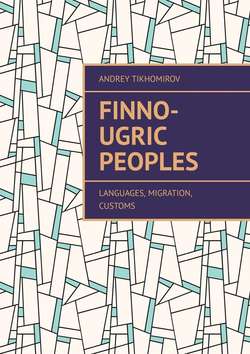Finno-Ugric peoples. Languages, Migration, Customs

Реклама. ООО «ЛитРес», ИНН: 7719571260.
Оглавление
Andrey Tikhomirov. Finno-Ugric peoples. Languages, Migration, Customs
Finno-Ugric languages
Finno-Ugric migrations
Brief Grammar of Modern Finno-Ugric Languages
Customs, ceremonies
Science news
References
Отрывок из книги
Finno-Ugric languages (or Finno-Ugric languages) are a group of languages that are closely related to the Samoyed languages and together with the latter form a large genetic Uralic language family.
Finno-Ugric languages are divided into the following branches: Hungarian, represented by the Hungarian language; Ob-Ugric, consisting of the Mansi and Khanty languages spoken in the northern part of the Ob River basin; Baltic-Finnish with languages: Finnish, Estonian, Libyan, Vodsky, Vepsian, Izhora and Karelian; Sami, represented by the Sami language, spoken by the Sami (Lopari) living on the Kola Peninsula, in northern Finland, Sweden and Norway; Mordovian with two main dialects – Erzya and Moksha; Mari, consisting of meadow-east and mountain dialects; Permian, including the Udmurt language and the Komi language with the Komi-Zyryan, Komi-Permyak and Komi-Yazvin dialects.
.....
In the 2nd half of the 14th century Old Permian script was created in the Komi language, which fell into decay in the 18th century. Ancient Perm writing – writing written in the 14th century. missionary Stefan Perm on the basis of one of the ancient dialects of the Komi language. A special alphabet was compiled following the model of Greek and Slavic-Russian; translations of some liturgical books were made. Now out of use. Currently, small monuments are preserved from it in the form of inscriptions on icons and in manuscript books, alphabetical lists, etc. A valuable source for studying ancient Perm writing is the list of liturgies (the so-called Evgenievo-Lepёkhinsky texts), rewritten in the 17th century. Russian alphabet from Old Perm, which is a coherent text about 600 words in size. This writing in the 14—17 centuries. also enjoyed popularity among Russian Moscow scribes, who used it as a cryptography.
The most ancient written monuments are Hungarian (13th c.), Komi (14th c.), Finnish (15—16 cc.).
.....